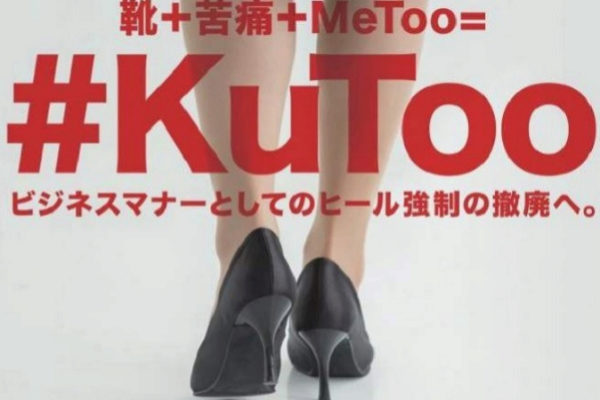The movement against the use of heels shoes.
The high-heeled shoes show the person with a more stylized and taller figure but using them all day long becomes torture for most women (and more so if their use in the company is mandatory). it works), because when using them the weight of the body goes directly to the tip of the foot and therefore there is more pressure and great pain is presented, in addition, one must be more careful where to walk since in some situations the streets have bumps, stones, cracks, etc., that if you do not pay attention the person can end up hurt.
This is why in Japan the digital complaint of a young girl who was forced to wear heels to work at a funeral home went viral, and the actress and writer Yumi Ishikawa joined that complaint and decided to start a digital campaign to end that unwritten rule so that women are no longer required to wear high-heeled shoes at work.
This movement is called #KuToo, following the call and very well-known #MeToo. A game was made with the words "kutsu" which means shoe, and "kutsuu" which means pain.
However, despite the great acceptance of this movement by society, there are still people who do not support him as the Minister of Health, Takumi Nemoto, who says that the use of heels in women is necessary and appropriate at work. and that is "socially accepted".
This is not the first campaign or movement that is made to change the dress codes at work for women.
Previously in the UK Nicola Thorp started a petition to change these codes at work after the financial company PwC asked her to wear heels. When this case reached the media, it was announced that workers could wear flat shoes.
On the other hand, in Canada in the province of British Columbia, the code that requires women to wear heels has been eliminated, as women wear the risk of physical injuries due to slips or falls, as well as possible damage to their feet, legs, and back.
It is important to realize that what we think is appropriate to use and is accepted by the social imaginary, is because we have seen and lived for years, but not for those reasons should be required or forced to use it and less if you think that It is because it looks good or gives status within the company.






Comentarios
Publicar un comentario